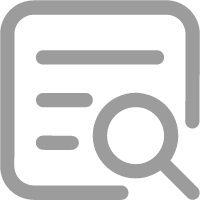| Citation: | Shen Y,He J,Liu JZ,et al.A randomized controlled trial on the effect of early eschar dermabrasion combined with antimicrobial soft silicone foam dressing in the treatment of deep partial-thickness burn wounds in children[J].Chin J Burns Wounds,2024,40(4):342-347.DOI: 10.3760/cma.j.cn501225-20231004-00103. |
| [1] |
林国安.小儿烧伤流行特点和早期处理[J/CD].中华损伤与修复杂志(电子版),2018,13(4):247-252.DOI: 10.3877/cma.j.issn.1673-9450.2018.04.002.
|
| [2] |
刘琰,张杰.浅谈小儿深Ⅱ度烧伤创面的处理[J].中华烧伤杂志,2021,37(8):797-800.DOI: 10.3760/cma.j.cn501120-20200512-00261.
|
| [3] |
中华医学会烧伤外科学分会.磨痂术在烧伤创面中的临床应用全国专家共识(2021版)[J].中华烧伤杂志,2021,37(6):501-507.DOI: 10.3760/cma.j.cn501120-20210110-00013.
|
| [4] |
RuanJ,XiM,XieW.Analysis of 12,661 pediatric burns in Wuhan institute of burns: a retrospective study of fifteen years[J].Burns,2021,47(8):1915-1921.DOI: 10.1016/j.burns.2021.02.021.
|
| [5] |
罗高兴,孙晓艳,吴军.重视精准烧伤医学体系的建设与推广[J].中华烧伤与创面修复杂志,2023,39(7):612-617.DOI: 10.3760/cma.j.cn501225-20230407-00116.
|
| [6] |
李峰,迟云飞,胡泉,等.伤后早期微创削痂治疗小儿躯干及四肢深Ⅱ度烧伤创面的效果[J].中华烧伤杂志,2018,34(10):714-718.DOI: 10.3760/cma.j.issn.1009-2587.2018.10.012.
|
| [7] |
胥学冰,史昌乾,张博,等.磨痂术对大鼠浅Ⅱ°烫伤创面愈合的影响[J].武警医学院学报,2010,19(3):193-195.
|
| [8] |
李学川,郇京宁,章雄,等.猪深Ⅱ度烫伤早期磨痂术后创面组织学改变及CK和EGFR表达[J].上海交通大学学报(医学版),2009,29(5):554-557.
|
| [9] |
ShaoH,LuoR,YouC,et al.Clinical effect of emergency dermabrasion combined with biological dressing A on wound microcirculation and preventing sepsis in deep degree-Ⅱ burns[J].Emerg Med Int,2022,2022:4730905.DOI: 10.1155/2022/4730905.
|
| [10] |
DissemondJ,AssenheimerB,GerberV,et al.M.O.I.S.T. concept for the local therapy of chronic wounds[J].Dtsch Med Wochenschr,2023,148(7):400-405.DOI: 10.1055/a-1987-4999.
|
| [11] |
吕国忠,吴军,罗高兴,等.2021年烧伤外科学领域的十大进展[J].中华医学信息导报,2022,37(1):10.DOI: 10.3760/cma.j.issn.1000-8039.2022.01.111.
|
| [12] |
顾佳.磨痂术联合水胶体敷料对大鼠深Ⅱ度烫伤创面愈合影响的实验研究[D].镇江:江苏大学,2021. |
| [13] |
陈才,田文艳,寇新燕.创面磨削痂术联合外用rhGM-CSF对Ⅱ度烧伤患儿创面愈合的影响[J].中国美容医学,2023,32(7):28-31.
|
| [14] |
GuoZQ,QiuL,GaoY,et al.Use of porcine acellular dermal matrix following early dermabrasion reduces length of stay in extensive deep dermal burns[J].Burns,2016,42(3):598-604.DOI: 10.1016/j.burns.2015.10.018.
|
| [15] |
OuyangW,WangM,JinL.The effect of vacuum sealing drainage after early woundabrasion on wound healing in diabetic patients with deep second degree burn and its influence on the inflammatory response[J].Am J Transl Res,2021,13(8):9814-9819.
|
| [16] |
中华医学会烧伤外科学分会.儿童深Ⅱ度烧伤创面处理专家共识(2023版)[J].中华烧伤与创面修复杂志,2023,39(10):901-910.DOI: 10.3760/cma.j.cn501225-20230730-00026.
|
| [17] |
DeitchEA,WheelahanTM,RoseMP,et al.Hypertrophic burn scars: analysis of variables[J].J Trauma,1983,23(10):895-898.
|
| [18] |
CubisonTC,PapeSA,ParkhouseN.Evidence for the link between healing time and the development of hypertrophic scars (HTS) in paediatric burns due to scald injury[J].Burns,2006,32(8):992-999.DOI: 10.1016/j.burns.2006.02.007.
|
| [19] |
WisemanJ,WareRS,SimonsM,et al.Effectiveness of topical silicone gel and pressure garment therapy for burn scar prevention and management in children: a randomized controlled trial[J].Clin Rehabil,2020,34(1):120-131.DOI: 10.1177/0269215519877516.
|
 沈阳贺钧.mp4
沈阳贺钧.mp4
|

|
